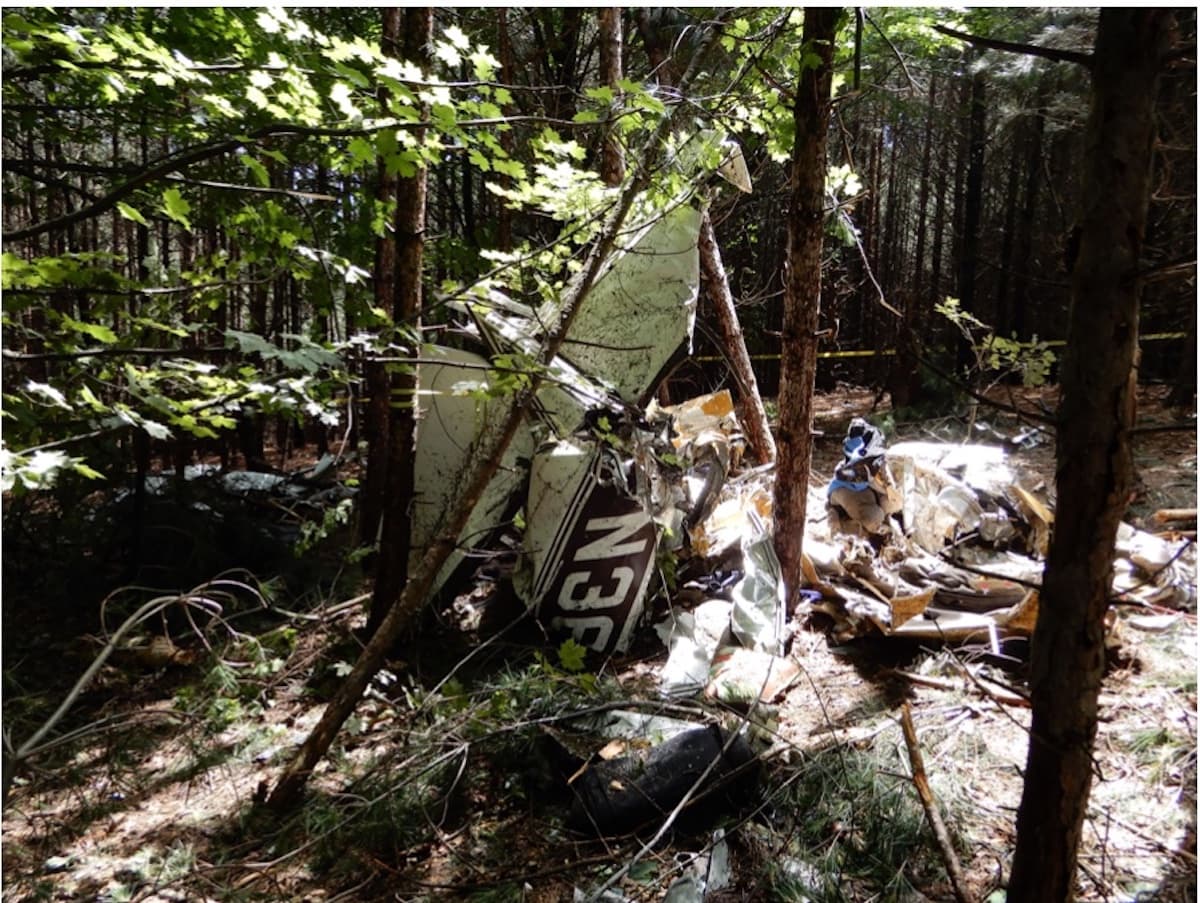
The flight departed from Runway 9 at Oceana County Airport (C04) in Shelby, Michigan, with a destination of Warsaw Municipal Airport (KASW), in Indiana.
Two witnesses, who were both commercial pilots, were at the airport and observed the Cessna 210C depart.
One witness reported that the ceiling at the time of takeoff was no higher than 100 feet, and the other witness reported that the airplane entered instrument meteorological conditions as it crossed a road about 1,300 feet past the departure end of the runway. Both witnesses reported that the visibility was poor and it was raining at the time.
Another witness, who owned the land where the airplane crashed, was inside his home at the time. He heard a “big roar outside.” He got up to look, thinking it was a tractor-trailer going by his house. He then heard a “big bang,” looked outside his picture window, and saw smoke or dust.
He realized that an airplane had crashed adjacent to his house in the woods and the big roar was the engine running and it was “revving up.” The entire sequence lasted about 30 seconds.
The pilot and a passenger died in the crash.
The wreckage was located in a wooded area about 1.5 nautical miles southeast of C04. There was no fire. The wreckage was highly fragmented. The measured descent angle through the broken tree limbs was about 50°.
All structural components of the airplane were accounted for within the wreckage path. Smooth, angular cuts, consistent with propeller blade contact, were found on several tree branches scattered throughout the wreckage path.
At the time of the accident, a low-pressure system was located in Iowa associated with a cold front and stationary front that stretched from Nebraska through southern Iowa and Illinois and eastward through Kentucky. Also, a mid-level trough was located above the accident site. Troughs and fronts can act as lifting mechanisms to help produce clouds and precipitation if sufficient moisture is present.
In addition to the Michigan Municipal Airport (KFFX) weather detailed in the NTSB report, C04 weather was provided to investigators by the airport manager. No ceiling information was available for C04, however, at 6:15 p.m., the Automated Weather Observing System recorded wind from 130° at 5 knots, visibility 2 miles, temperature 17°C, relative humidity 98%, and an altimeter setting of 30.09 inches of mercury.
National Weather Service forecast information for the area surrounding the accident site included instrument meteorological conditions that were expected to persist beyond 11 p.m.
A search of the Leidos and ForeFlight systems revealed that the pilot did not request weather information from these providers before the flight.
The pilot’s widow was asked if her husband showed any sense of urgency in commencing the flight in instrument weather conditions. She stated that their son was driving in a demolition derby race in Warsaw and her husband had missed his previous races and did not want to miss this race.
Probable Cause: The non-instrument rated pilot’s decision to commence the flight in instrument meteorological conditions, which resulted in spatial disorientation and a subsequent loss of airplane control. Contributing to the accident was the pilot’s self-induced pressure to initiate the flight.
To download the final report. Click here. This will trigger a PDF download to your device.
This July 2022 accident report is provided by the National Transportation Safety Board. Published as an educational tool, it is intended to help pilots learn from the misfortunes of others.

I wonder if BFRs for non-instrument rated pilots should include simulated IMC just to show a pilot how long it takes for them to get into an unusual attitude that would lead to loss of control — Would this cut down on VMC into IMC crashes?
Well, he missed the race. We try and try again to warn these people, but they won’t listen.
He went to a demolition derby alright.
No mention of the time of takeoff?
According to the NTSB report the flight departed on July 15, 2022 at 18:15.
Get-there-itis strikes again. It always wins. RIP to those lost in this wreck.
Regards/J
One of the most preventable accidents ever!